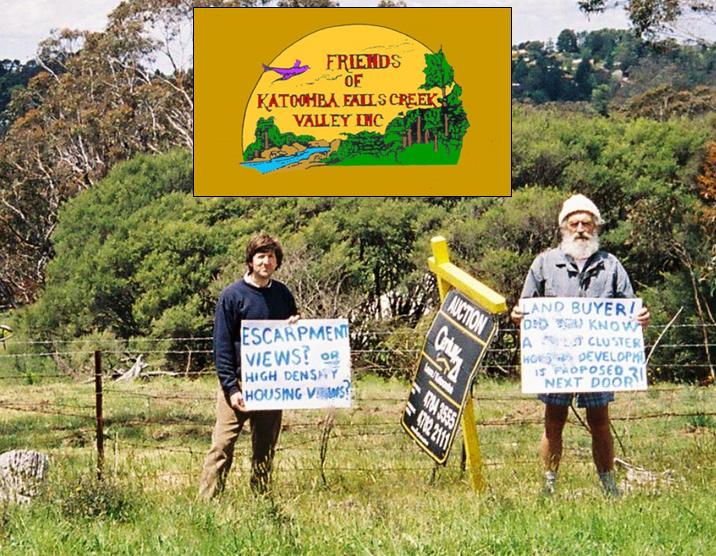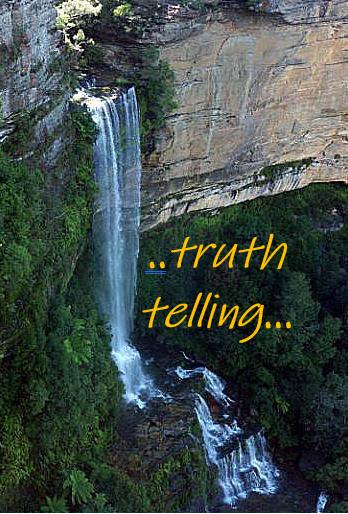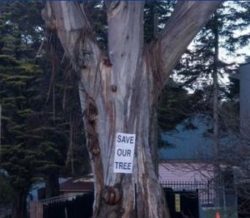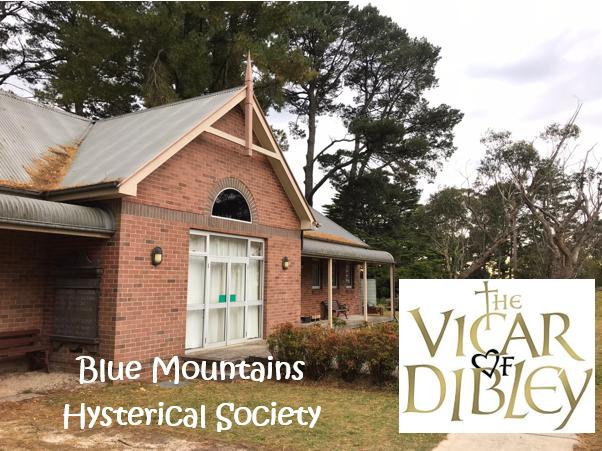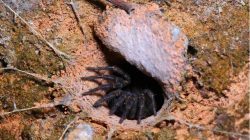Archive for the ‘Habitat Advocacy’ Category
Wednesday, October 8th, 2014
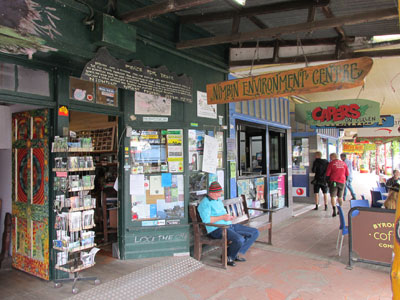 Nimbin Environment Centre
Cullen Street (main street), Nimbin, New South Wales, Australia
[Source: Nimbin Environment Centre,
^http://www.nimbincommunity.org.au/index.php/environment-centre] Nimbin Environment Centre
Cullen Street (main street), Nimbin, New South Wales, Australia
[Source: Nimbin Environment Centre,
^http://www.nimbincommunity.org.au/index.php/environment-centre]
.
Amongst other worthy places, there are two that are special and worth a visit when exploring the Northern Rivers Region of New South Wales. Walk the ‘Wonga Walk’ (5.4km) beneath the rainforest canopy in Dorrigo National Park and stroll through the counterculture village of Nimbin calling into the Nimbin Environment Centre.
.
Dorrigo Plateau Country
.
Perhaps the tallest remaining rainforest trees survive in the natural ecology and splendour in Dorrigo National Park, part of originally Gumbaynggirr Aboriginal Country, and currently one of eight groups of World Heritage protected areas in the Gondwana Rainforests of Australia..
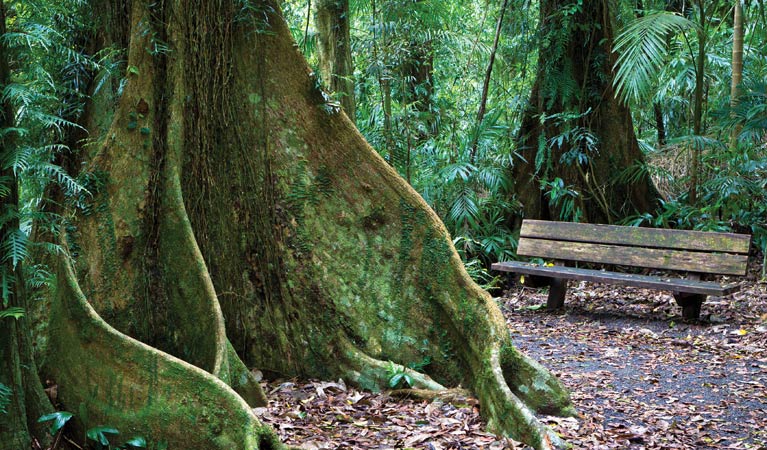 Yellow carabeen (Sloanea woollsii)
Found growing naturally up to 55 metres tall along the Wonga Walk in Dorrigo National Park
[Source: NSW National Parks and Wildlife Service,
^http://www.nationalparks.nsw.gov.au/dorrigo-national-park/wonga-walk/walking/visual-tour] Yellow carabeen (Sloanea woollsii)
Found growing naturally up to 55 metres tall along the Wonga Walk in Dorrigo National Park
[Source: NSW National Parks and Wildlife Service,
^http://www.nationalparks.nsw.gov.au/dorrigo-national-park/wonga-walk/walking/visual-tour]
.
Nimbin
.
The village of Nimbin is many miles from Dorrigo, but that doesn’t matter. Nimbin’s spirit is similar from that gained on the rainforest walk.
Perhaps one of the most respectful and communicative messages of any community in Australia is that of Nimbin’s, which draws upon the values of local Aboriginal elders, and shared by Nimbin’s close-knit local mix:
“We belong this country
We look after this country
Don’t do wrong around here this country
We don’t harm this country here
We belong to it this country”
~ Bundjulung Elders.
.

The Nimbin Environment Centre is a voluntary non-profit organisation. It’s website reads: our history is rooted in the successful battles which saved Terania Creek and The NightCap Forest. We are very conscious of our continuous role as custodians of this land, hand in hand with its first people: The Bundjalung nation. We receive no funding from State or Federal Governments. This empowers us to be fearless in our work to defend, protect, preserve and enhance the environment.
We read this and reflect upon our crews visit in October 2013, and upon the subsequent town fire of the 13th August 2014 which tragically struck at the heart of Nimbin.
We remember and preserve some memories for those who have contributed to the Magic of Nimbin since the Aquarius Festival of 1973 which has since celebrated the hope of ‘Counter Culture’.
We offer the following images of a Nimbin morning taken by our editor paying an overnight visit to Nimbin 23rd – 24th October 2013. All images are copyright free in the public domain as we consider appropriate. Nimbin sets an example of community respect to the world. For each image click to enlarge.
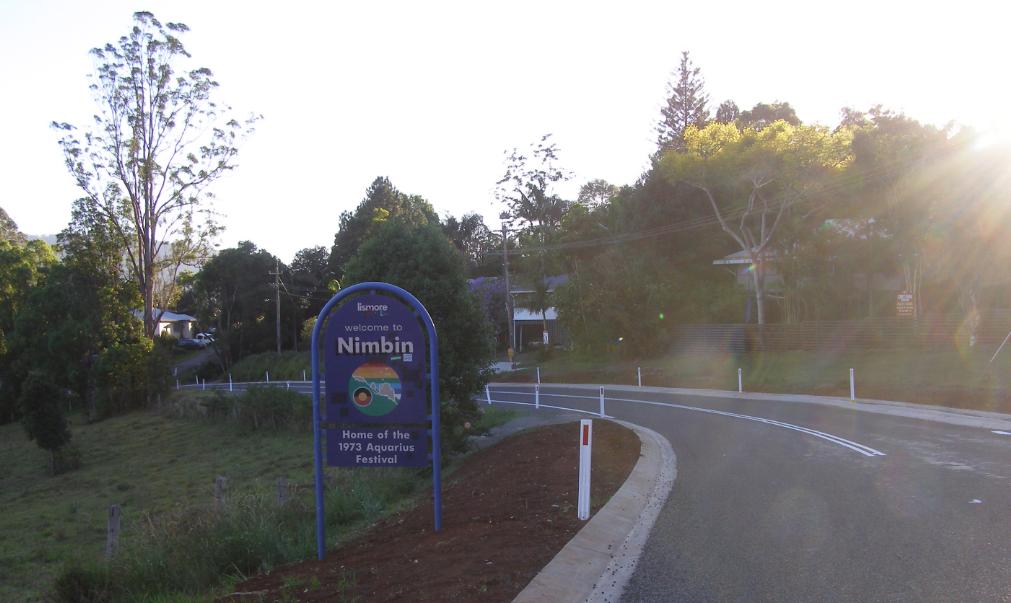
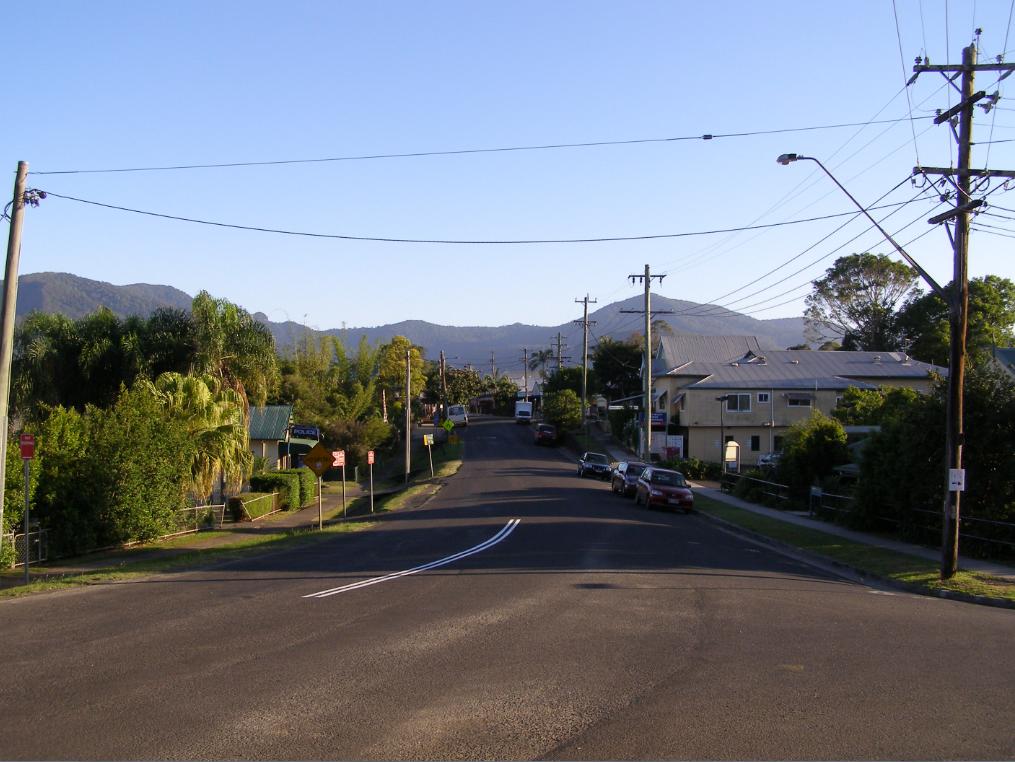
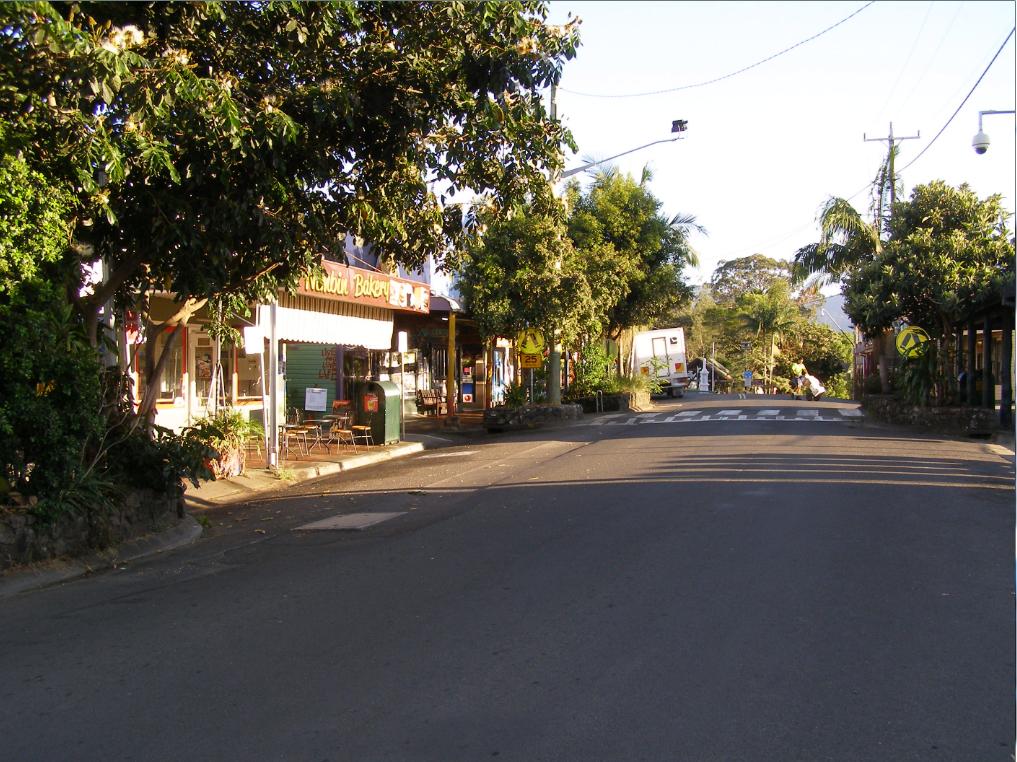
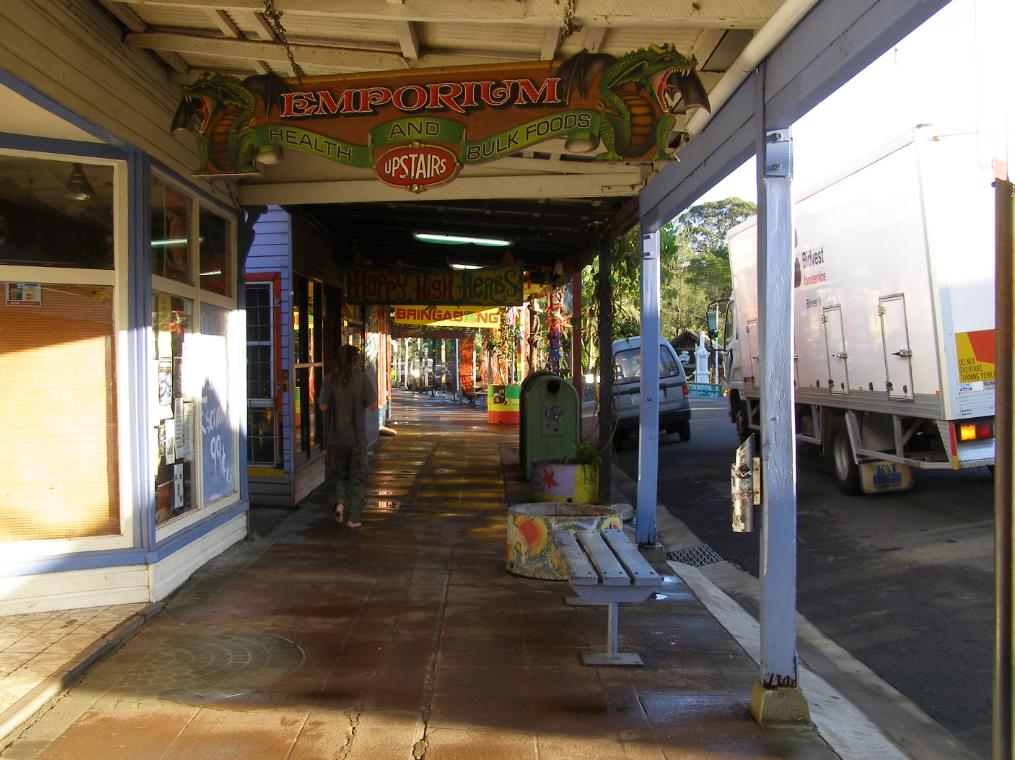
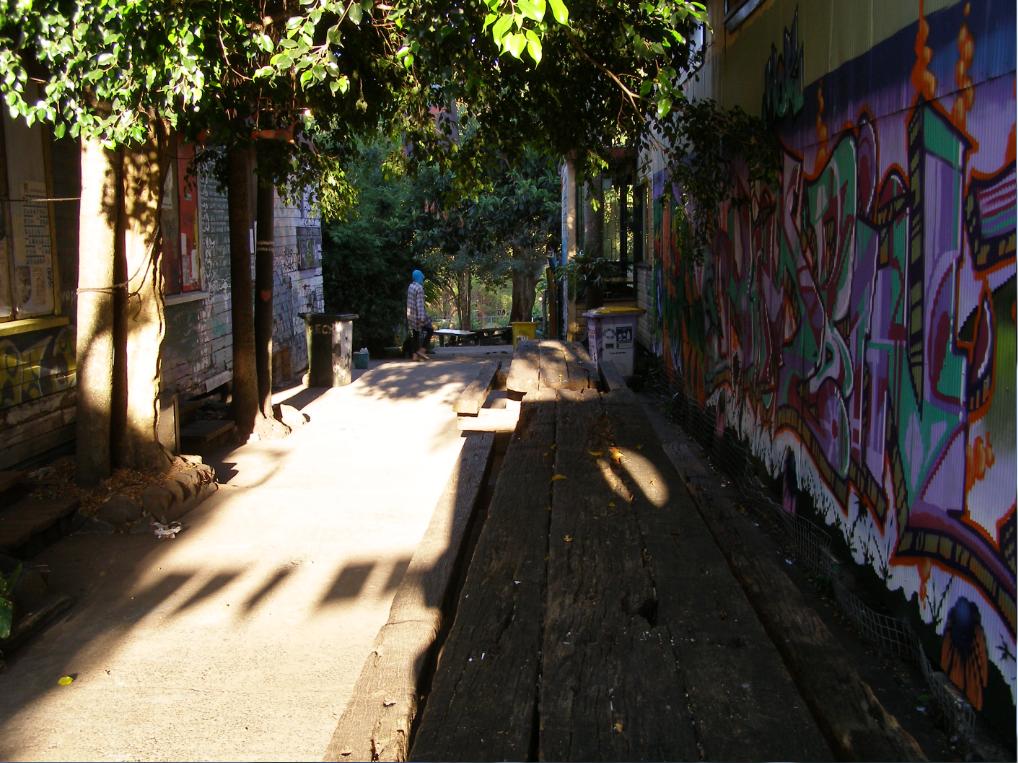
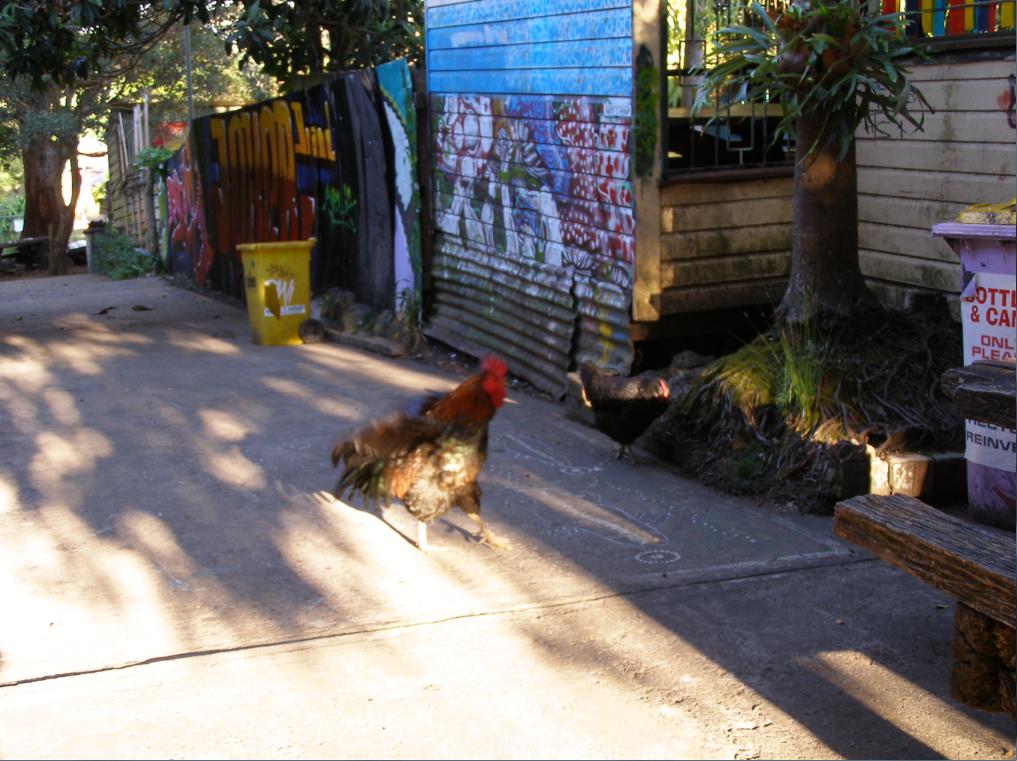

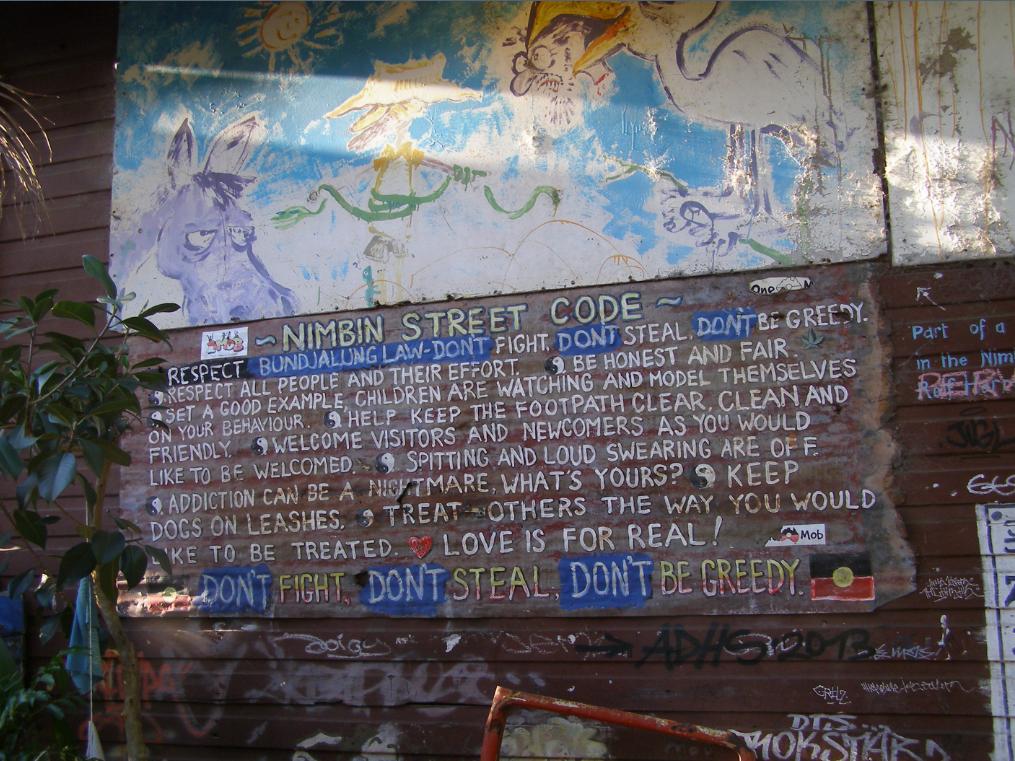
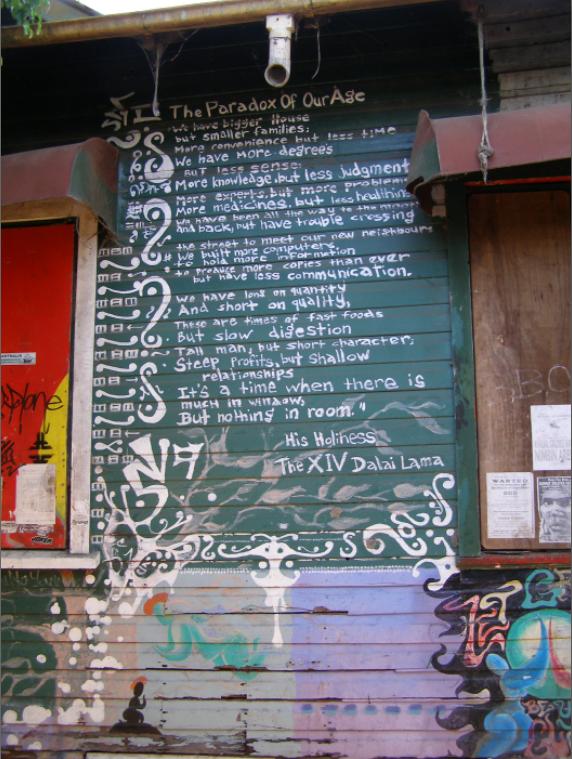
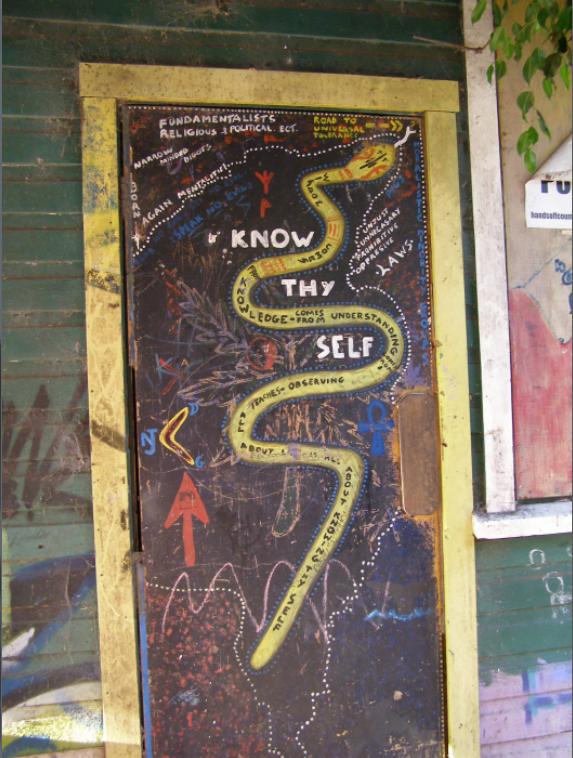

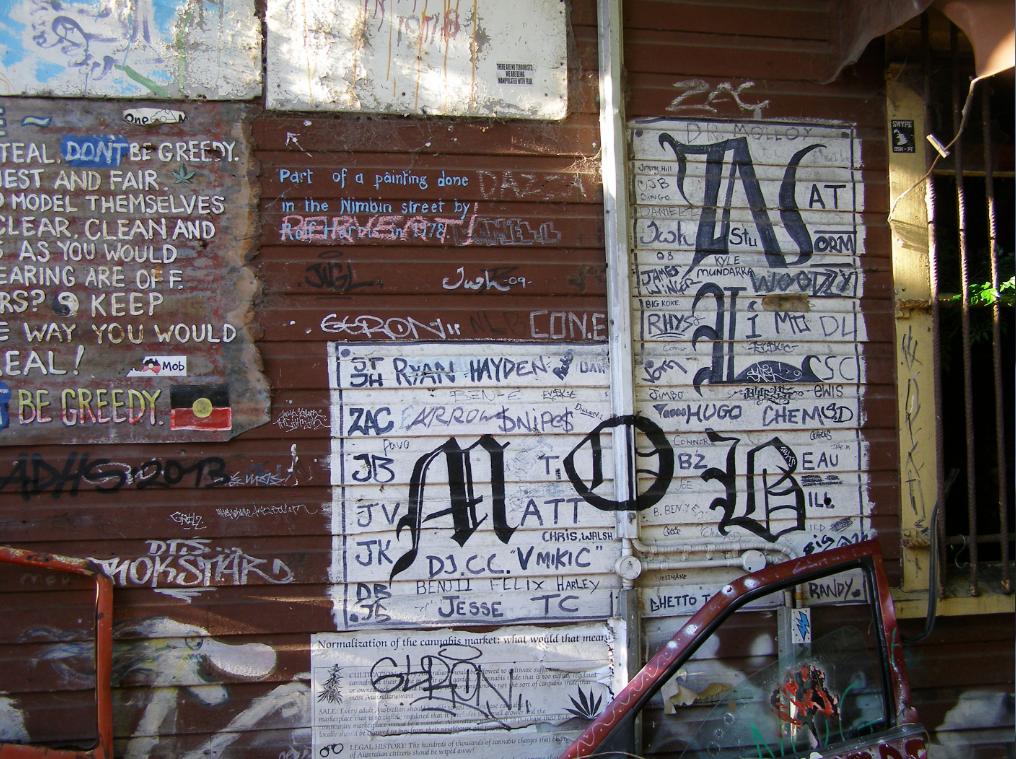
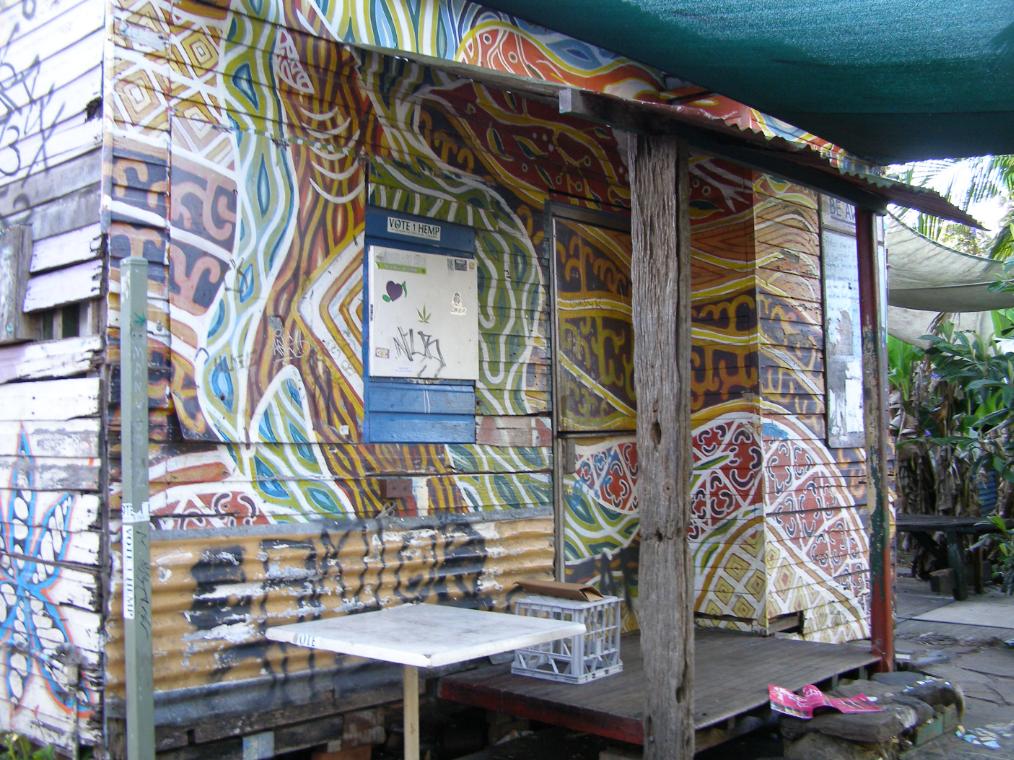
.
Further Reading:
.
[1] Nimbin Environment Centre, ^http://www.nimbincommunity.org.au/index.php/environment-centre
.
[2] Nimbin Museum, ^http://nimbinmuseum.com/
.
[3] Friends of Gondwana Rainforest, ^http://gondwanarainforest.org/australia
.
[4] ‘Once Upon a Time in Nimbin‘, a traveller’s account, 20120703, ^http://www.soulfoodtraveller.com/2012/07/once-upon-timein-nimbin.html
.
[5] Rainforest Publishing, owned by Hugh and Nan Nicholson, The Chandon, ^http://www.rainforestpublishing.com.au
.
Monday, March 31st, 2014
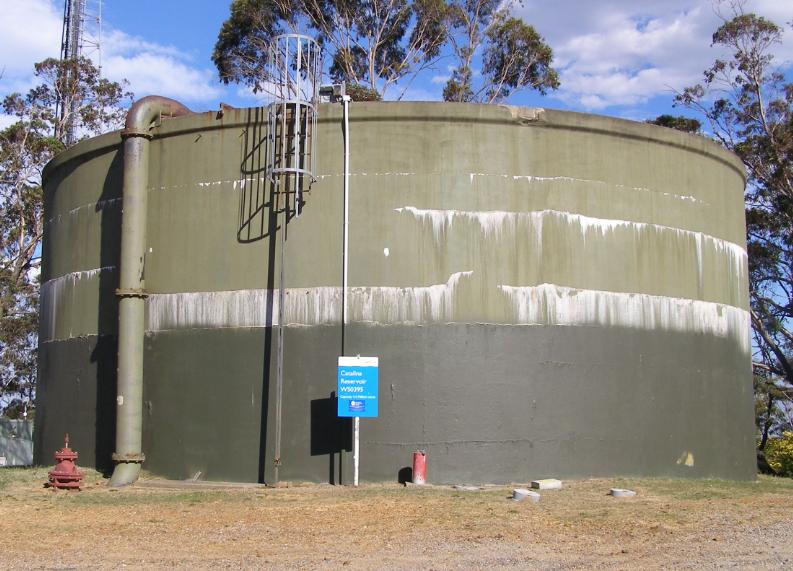 Sydney Water reservoir half-painted
Narrow Neck Road, Katoomba
[Photo by Editor, 20131213, Photo © under ^Creative Commons] Sydney Water reservoir half-painted
Narrow Neck Road, Katoomba
[Photo by Editor, 20131213, Photo © under ^Creative Commons]
This water reservoir tank is one of two on the ridgetop at Narrow Neck Road, Katoomba (Central Blue Mountains, New South Wales) which supplies drinking water to the immediate and surrounding residents of Katoomba.
Previously, in May 2013 we took a photo of both tanks showing the white chlorine salt efflorescence stains and we published an article later in August that year. Why then should someone wish to paint over the stains with green paint? Do they think it will make the water cleaner and more appealing to be drunk?
In our previous article on this topic we asked: “Are we to now expect fresh green paint over the chlorine salt efflorescent tanks to hide the problem?” It seems Sydney Water has done just that. Who else would spend their own money to paint over a government water tank? Why is it that Sydney Water’s water quality analysis measured at the upstream Cascade Reservoir and not from these tanks before it flows to residents?
This is the analysis:
[Source: ‘Typical drinking water analysis’, Cascade Water Supply System, Sydney Water, undated (so supposedly indicative), ^http://www.sydneywater.com.au/web/groups/publicwebcontent/documents/document/zgrf/mdq0/~edisp/dd_044721.pdf]
This is the same tank previously in May 2013:
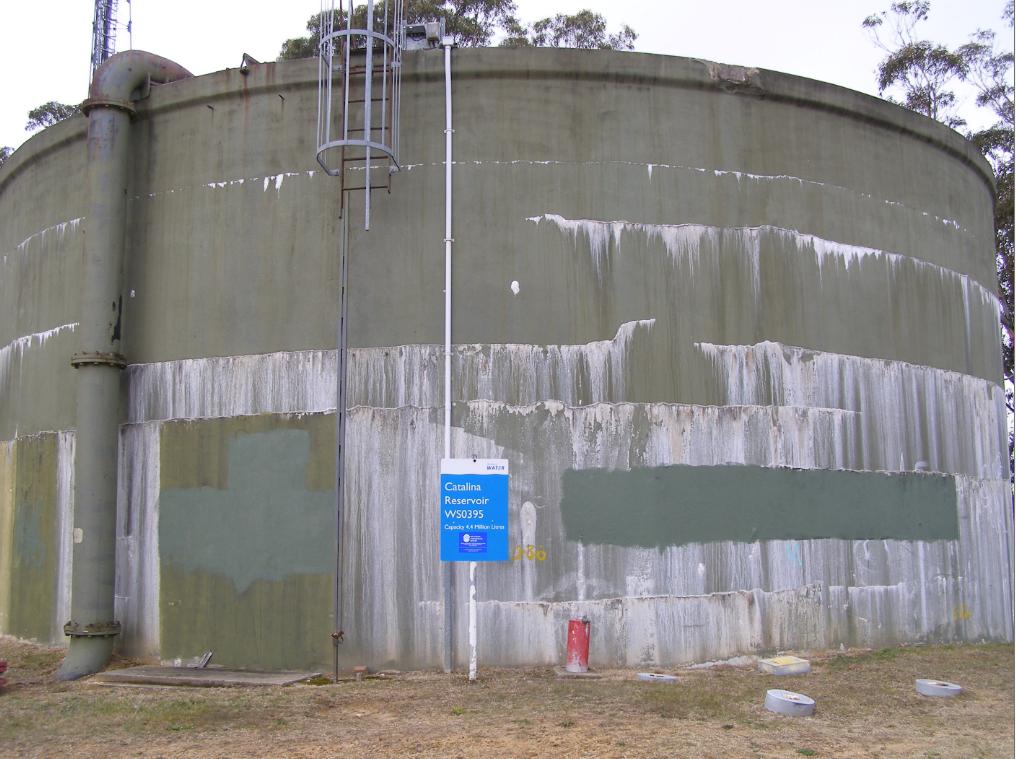 Blue Mountains drinking water tank with chlorine salt stains
Mineral salt efflorescence
Narrow Neck Road, Katoomba
[Photo by Editor, 20130507, Photo © under ^Creative Commons] Blue Mountains drinking water tank with chlorine salt stains
Mineral salt efflorescence
Narrow Neck Road, Katoomba
[Photo by Editor, 20130507, Photo © under ^Creative Commons]
.
This is our previous article:
.
.
Friday, February 7th, 2014
 Guy Fawkes River National Park near Ebor Falls
Northern Rivers Region, New South Wales, Australia
These parks are located in the traditional lands of the Gumbaynggirr and Banbai Aboriginal people.
Sites of high cultural significance are located along traditional walking routes between the Boyd River and high country around Ebor.
[Click image to enlarge, photo by Editor 20131025, © under ^Creative Commons]
Guy Fawkes River National Park near Ebor Falls
Northern Rivers Region, New South Wales, Australia
These parks are located in the traditional lands of the Gumbaynggirr and Banbai Aboriginal people.
Sites of high cultural significance are located along traditional walking routes between the Boyd River and high country around Ebor.
[Click image to enlarge, photo by Editor 20131025, © under ^Creative Commons]
.
Welcome to Country
.
<< I am so honoured to have been asked to be with you here today and would like to thank the Custodians and Keepers of this country, both past and present, for the privilege, of welcoming you, this morning.
I extend, a very special welcome to all the Elders with us today, Indigenous and non-Indigenous.
Becoming welcomed to country, is not just saying “welcome to the country of the Wonnarua, Tharawal, Gandangara, Wiradjuri, Gomilaroi, Bandjalung, worimi and leaving it at that.
It’s about wanting our welcomed people to at least, at some time in their lives, experience some of the many important cultural aspects of our countries, which have survived.
Our languages, our songs, dances, stories, foods, kinships, arts and histories.
It’s about shedding ourselves of all of those negative generalisations, stereotypes and guilt, which some of us, may still have for each other.
It’s about wanting welcomed peoples, to get to know us, in all our positive ways.
History tells us that our peoples went through some very terrible times, with some legacies of those times, still yet to be addressed, positively.
It’s about non Indigenous Australia’s sincere recognition,that this whole country was already under custodianship, respected and nurtured by people, before the advent of British rule.
It’s about seeing each other as equals, and commemorating the positive developments of this country, which we have all shared in, as being Australians together.
My peoples have merged and interacted with the new people who came to our lands since Invasion times started in 1788 and will continue to do so.
We now speak your English, wear your attire, do your dances, play your sports, eat your foods, sing your songs and know your stories and histories.
There are also non Indigenous people who speak our languages, sing our songs, eat our foods and know our stories and histories.
We have integrated into your many religious, political, social and sporting, organisations and in doing so, became one of this countries most integrative groups.
Our women married into the first Irish, Anglo and Celtic stock, plus those groups which came here under the many immigration policies this country has had, especially after the 1940s.
We are all Australians today, aren’t we?
Ladies and Gentlemen, on behalf of the Gadigal Clan of the Eora Nation whose land this function is now on, to sincerely welcome you in their language, the language of this country.
.
Boodyeri Mulinawul!
Good Morning!
Dyinalyungs, Mullabos, Guragalungalyungs, Guragalyungs
Ladies and Gentlemen, Girls and Boys.
Gurigarang tali ngia niya bidya mulinawul
Glad to see you here this morning
Dali dingaladi bamal marana Yura Warrane Eora
This is the land of the original peoples of Sydney, the Eora.
Wingara ngubadi Eora Bamal
Please Respect Eora Land.
Garigarang walama wugul kamaru
May your stay here be fruitful and safe and your departure, in peace.
Yanu Yanu.
Bye Bye’. >>
.
[Source: ‘Welcome to Country’, Aboriginal speech delivered at the start of the 2013 Masters Interpretation Workshop, Thursday, November 21, 2013, by James Wilson-Miller, Curator, Koori Arts, History & Design, Design & Society, Powerhouse Museum, 500 Harris Street, Ultimo, Sydney, NSW 2007 Australia]
.
Sunday, November 24th, 2013
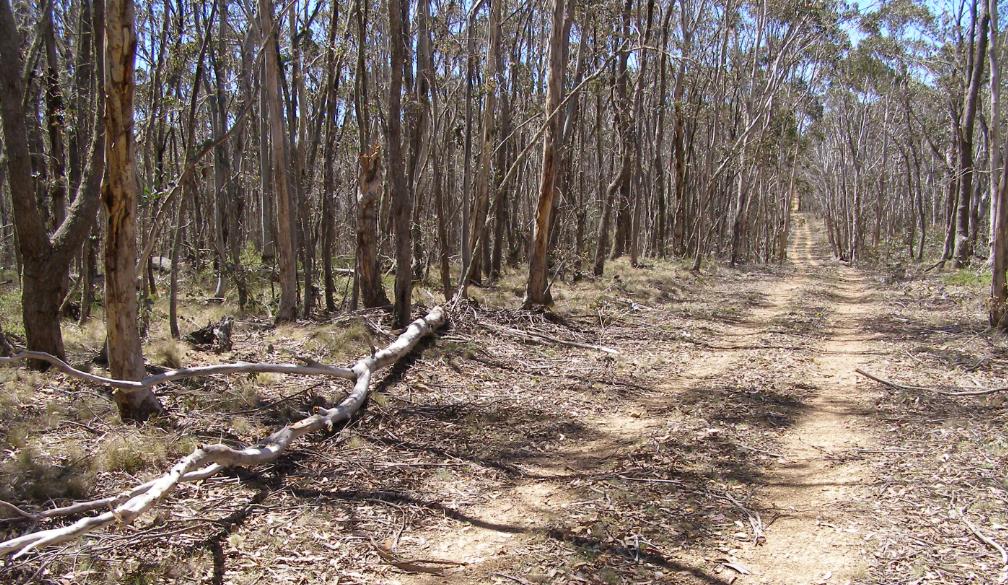 Kanangra Range, Kanangra-Boyd National Park Kanangra Range, Kanangra-Boyd National Park
[Photo by Editor 20131109, © under ^Creative Commons]
.
Budthingeroo
(a poem)
.
I could tell you a thing or two about Budthingeroo
About its mount, its bouldered ridge beyond
About its creek that carves through its lost ravine
All named after, Budthingeroo
About old Jimmy Whalan’s stock yards up on the wild Kanangra Range
Above where the Kowmung Cedars grew tall and the log moss grew thick
He’d well know how summer scorches its grassy woods
How its winters bite to the bone
Stunted yet happy Scribbly Gums thrive on the stoney soil
Holding on for dear life enduring the cold Oberon squalls
It’s much quieter these days up on Budthingeroo
The cedar men took their bounty
The cattle stockmen have long gone
The fires of ’29 took their toll of what was left of country
Now it’s wilderness of sorts across the Kanangra Range, cept for Rock Wallaby
Now it’s wilderness of sorts, cept for their escaped pigs and dogs
Or was Park’s Kanangra-Boyd just for thirsty Sydney, sterilised by cruel 1080?
A Sydney traveller can find the signs of the old colonial life
By passing through Luther and Budthingeroo
Past Whalan’s old paddocks, fences and greyed broken yards
And wonder ’bout the origin of Kanangra map’s many odd namings
A thousand stumps could tell you a thing or two about what happened at Budthingeroo.
.
 The cedar men took their bounty. The cattle stockmen have gone.
Kanangra Range, Kanangra-Boyd National Park
[Photo by Editor 20131109, © under ^Creative Commons] The cedar men took their bounty. The cattle stockmen have gone.
Kanangra Range, Kanangra-Boyd National Park
[Photo by Editor 20131109, © under ^Creative Commons]
.
by Editor, first recited 20131124, at a breakfast camp near Box Creek on the Boyd Plateau, Kanangra-Boyd National Park.
.
Sunday, November 3rd, 2013
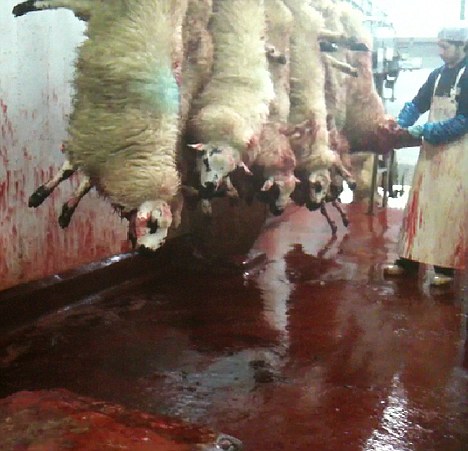
Australian live sheep endure halal torture in a Kuwait livestock market, October 2013
[Source: Animals Australia, ^http://www.banliveexport.com/take_action/kuwait-sheep-sold-illegally/]
.
<< On streets, in backyards and in back rooms at markets, countless sheep, during the Festival of Sacrifice, endure the agony of having their throats cut whilst fully conscious. Often killed by untrained hands, there’s no guarantees of a quick end to their suffering.
In the week leading up to the Festival of Sacrifice, Australian sheep were again found being illegally sold from a notoriously cruel livestock market in Kuwait.
They were destined to be sold to individual buyers for ‘sacrificial’ slaughter.
This very market was the scene of some of the most distressing and confronting cruelty that Animals Australia has ever documented. In 2010 our investigators gathered evidence of sheep being dragged, thrown, trussed and stuffed into car boots, tied onto roof racks and having their throats brutally cut – all while fully conscious.
https://www.youtube.com/watch?feature=player_embedded&v=G0Vmx0n6QYg
‘Strict’ live export rules were meant to protect animals from this fate.
But this is the third time Animals Australia investigators have found sheep in this market. Fourteen months ago we lodged our first complaint with the Department of Agriculture. As a result they imposed additional conditions on the export licences of the three exporters who sent Australian animals into Kuwait.
This footage was taken at Al Rai market in August 2012, and sparked Animals Australia’s first complaint to the Department of Agriculture:
.
.
Despite the additional conditions placed on the exporter, when our investigators returned in February this year, Australian sheep were STILL being offered for sale from this marketplace. A second complaint supported by extensive evidence was lodged and this investigation is still ongoing – nine months later.
Again, in October this year, Australian sheep were still there. This time on the eve of the Festival of Sacrifice – the peak time of animal cruelty and suffering in the region.
Regulations will continue to be disregarded and animals will continue to suffer unless the exporters responsible face severe penalties for breaches. >>
[Source: ‘Sheep suffer as exporters break rules again’, Aussie sheep endure cruel slaughter in Kuwait livestock market, Animals Australia, Oct 2013]
.
<< Sydney-based Halal Certification Authority Australia chairman Mohamed El-Mouelhy, Australia’s leading halal certifier, said it was impossible to stop people in the Middle East slaughtering animals at home or in the street.
“It’s part of the culture, and this is something that everyone has to do to give two-thirds to the poor and one-third they keep,” he said.
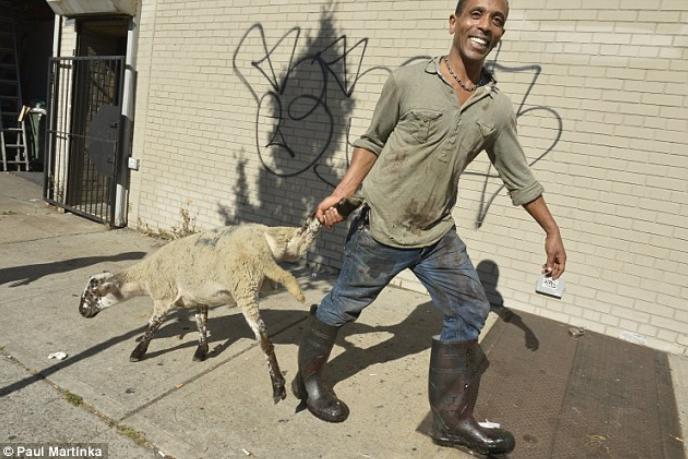
Fahad Saddique, manager of the Al Yasin halal butchery in Sydney’s Lakemba has called on animal-rights activists to show greater religious and cultural tolerance over live exports.
Australia’s Agriculture Minister Barnaby Joyce has conceded cruelty to exported livestock could not entirely be wiped out. Australia’s Prime Minister Tony Abbott says only “very foolish governments” make “policy on the run on the basis of one or two media reports”.
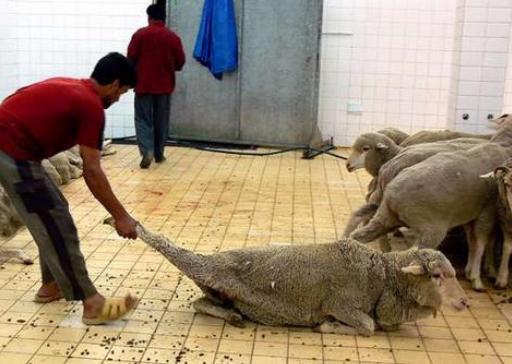
Animals Australia Lyn White said the problem was not religious, but simply about animal cruelty:
“This case is first and foremost about an Australian export company which has broken the law and whose ongoing disregard for Australian regulations in Jordan should attract the strongest sanctions. Australian export requirements permit halal, fully conscious slaughter, but they state that it needs to occur in abattoirs with appropriate infrastructure and trained workers so that the risks of cruel treatment are reduced.
The on-selling of Australian animals to private buyers for slaughter was strictly banned because of the welfare repercussions, especially during religious festivals. Animals Australia said 10,000 Australian sheep were sold outside the current Exporter Supply Chain Assurance Scheme introduced to make exporters responsible for animal welfare throughout the supply chain. >>
.
[Source: ‘Call for cultural tolerance over live exports as activists release film’, by Lauren Wilson, Rachel Baxendale, Jared Owens, The Australian (newspaper), 20131101, ^http://www.theaustralian.com.au/national-affairs/policy/call-for-cultural-tolerance-over-live-exports-as-activists-release-film/story-fn59nm2j-1226750892608]
.
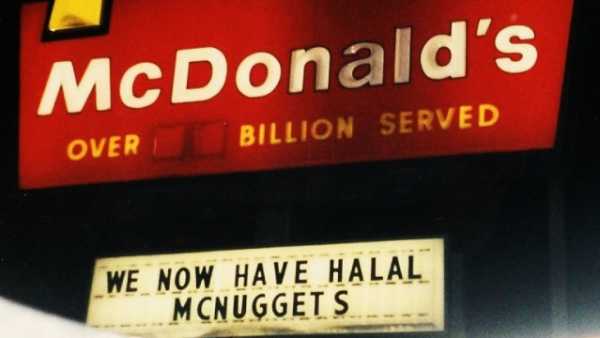 Most chain fast food outlets in Australia now stipulate that only Halal tortured animal meat be served in their stores
Buy Maccas, KFC, Hungry Jacks, Subway, Sumosalad, or any kebab takeaway and so condone halal torturing of livestock animals. Most chain fast food outlets in Australia now stipulate that only Halal tortured animal meat be served in their stores
Buy Maccas, KFC, Hungry Jacks, Subway, Sumosalad, or any kebab takeaway and so condone halal torturing of livestock animals.
.
.
.
Further Reading:
.

.
[1] Animals Australia, ^http://www.animalsaustralia.org/
.
[2] Ban Live Export, ^http://www.banliveexport.com/
.
[3] Get Up, ^https://www.getup.org.au/campaigns/animals/live-export/
.
[4] World Society for the Protection of Animals, ^http://www.wspa.org.au/wspaswork/liveexport/
.
[5] Australian Government’s official encouragement of live animal export, ^http://www.daff.gov.au/animal-plant-health/welfare/export-trade
.
Friday, September 20th, 2013

Last Monday 20130916, around 8.30am a native dingo was hit by a vehicle at 18 Mile Beach between Eurong and Dilli Village on Fraser Island. The Island is a World Heritage listed National Park and the wildlife is protected under the Nature Conservation Act.
Distressed witnesses stated the vehicle deliberately changed direction and aimed for the dingo which was struck. The vehicle continued to proceed at speed along the beach. It was described as an Orange Pajero.
The female lay suffering and howling in the sand with her mate close by licking her wounds, a Police Officer was called, who in turn contacted Rangers, sadly, the dingo had to be euthanised.
She appeared to be feeding. The fate of her pups is unknown.
This senseless act of cruelty will hardly cause a stir, there needs to be much stiffer penalties for injuring our wildlife. This is not acceptable.
The School holidays are here, a dingo casualty now, a child could be next.
If anyone has information please contact the local police or QPWS on (07) 4121 1800
Cheryl Bryant. Publicity Officer. Save Fraser Island Dingoes Inc.
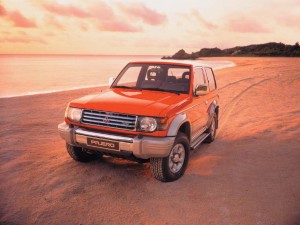 This is an old model Pajero, which may look like the killer’s car
This is an old model Pajero, which may look like the killer’s car
.
[Ed: It is past time that Fraser Island was completely closed to all tourism]
.
Thursday, August 1st, 2013
 Blue Mountains drinking water tank with chlorine salt stains Blue Mountains drinking water tank with chlorine salt stains
Mineral salt efflorescence
Narrow Neck Road, Katoomba
[Photo by Editor, 20130507, Photo © under ^Creative Commons]
.
Rainwater, streams, surface water, ground water, aquifers and Australia’s Great Artesian Basin are all interconnected hydrology across Eastern Australia.
In the Blue Mountains plateau country, west of Sydney, sandstone-ironstone geology creates a subterrainean barrier to rainwater absorption and so the ground water slowly flows horizontally over longer periods. This sustains upland swamps and wetland ecosystems.
Human built settlement across the central Blue Mountains ridgeland since the 1820s introduced sewage contamination into the downstream watercourses, gullies and gorge country below. The raw sewage drainage piping into the valleys below the townships has recently been diverted expensively to contained closed system sewage infrastructure. But urban runoff and dodgy stormwater overflows into legacy sewage mains cause ongoing leakages into the water catchments of the Blue Mountains.
Savvy local bushwalkers know not to drink the water from watercourses downstream of Blackheath, Springwood, Katoomba and other such townships.
Prudent government authority, Sydney Water, disinfects its drinking water reservoirs in the Blue Mountains, to be safe.
But some of the Blue Mountains water that falls as rain in a largely wilderness region, is captured as drinking water in a few reservoirs, then pumped by larged pipes up to large water tanks above the Blue Mountains townships to enable gravity to deliver pressurised water to thousands of homes.
.
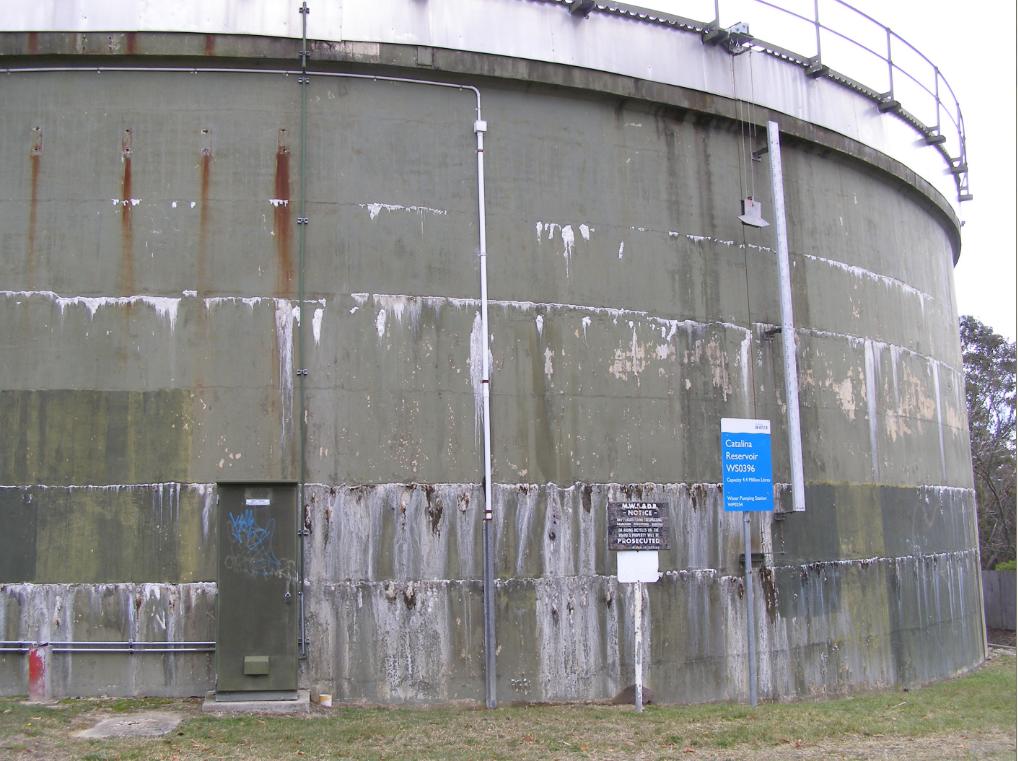 Second Blue Mountains drinking water tank with chlorine salt stains
Second Blue Mountains drinking water tank with chlorine salt stains
Narrow Neck Road, Katoomba
[Photo by Editor, 20130507, Photo © under ^Creative Commons]
.
Ed: Are we to now expect fresh green paint over the chlorine salt efflorescent tanks to hide the problem?
.
.
Chloramine Tap Water
.
Across New South Wales, Sydney Water routinely disinfects drinking water in its reservoirs to control the risk of prevalent and toxic E. coli, Cryptosporidium and Giardia bacteria contamination.
Sydney Water applies a derivative of chlorine known as chloramine in its reservoirs – a disinfectant formed by mixing chlorine with ammonia. This is less toxic than the hypochlorous acid typically applied to swimming pools. Given the history in the Blue Mountains of sewage and runoff downstream from upstream townships, Sydney Water ups the dosage of chloramine, to be sure.
Chloramine is a less effective disinfectant than the hypochlorous acid, but it is longer lasting and stays in the water system as it moves through the pipes that transport it to consumers (a process that can take three or four days). For this reason, chloramine is often used alongside chlorine as a “secondary” disinfectant designed to remain in drinking water longer. But what are the long term impacts of drinking Chloramine contained in drinking water. What long term scientific studies have been done and publicly reported?
Chlorine by itself is a very dangerous material. Liquid chlorine burns the skin and gaseous chlorine irritates the mucus membranes. Concentrations of the gas as low as 3.5 parts per million can be detected by smell while concentrations of 1000 parts per million can be fatal after a few deep breaths.
In the Blue Mountains, the tap water is decidedly hardened in taste by the chlorine additive. So should tap water in the Blue Mountains be drunk safely?
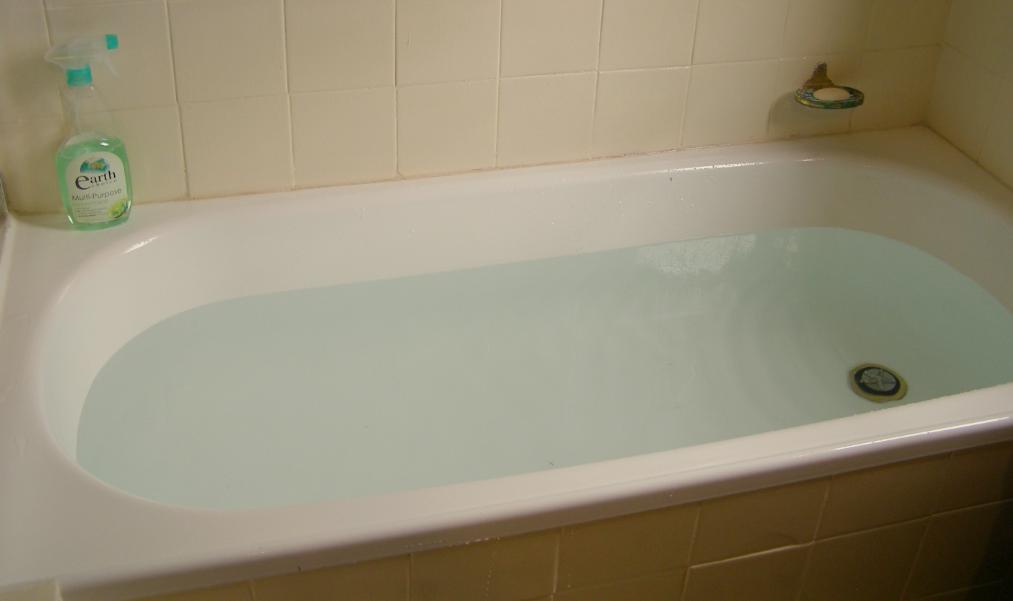 Blue Mountains bath with a distinctive chlorine aqua tinge
[Photo by Editor, 20130502, Photo © under ^Creative Commons] Blue Mountains bath with a distinctive chlorine aqua tinge
[Photo by Editor, 20130502, Photo © under ^Creative Commons]
So is the Blue Mountains tap water safe to drink?
.
Thursday, July 11th, 2013
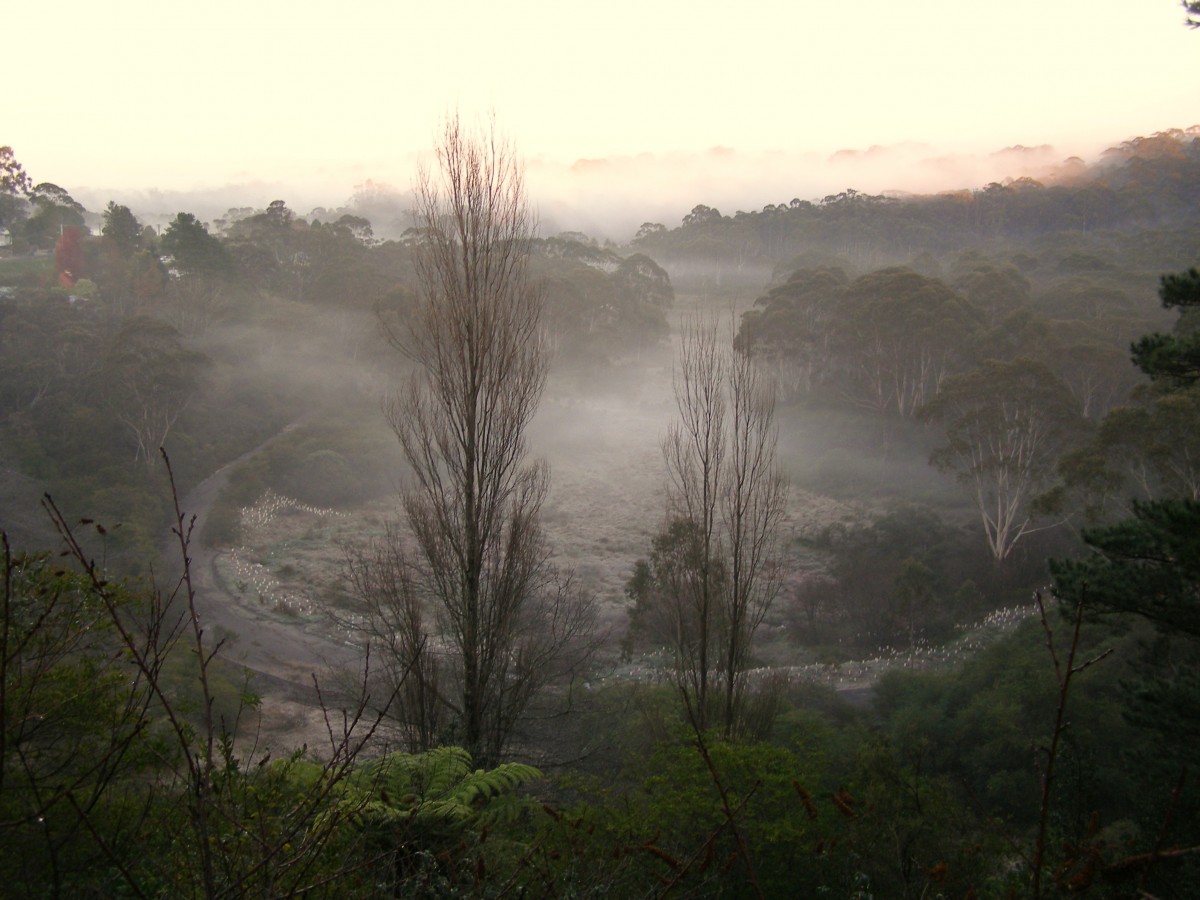 Frosty Morning in the Gully
[Photo by Editor, 20130711, Photo © under ^Creative Commons]
Click image to enlarge Frosty Morning in the Gully
[Photo by Editor, 20130711, Photo © under ^Creative Commons]
Click image to enlarge
.
Calling Me Home
.
<< I can feel the souls of my ancestors calling me back home
To all the familiar places and tracks I once did roam
I can see my Grandmother’s house at the end of Adams Street,
Where all the Aunties, Uncles and Cousins I did meet
To the banks of the Bokhara River running under the Richmond Bridge
You can hear the waters flow to the sound of an Elder’s didge
I can smell the boogalies cooking in a camp oven at my Aunty’s place
I can see the sun arising on the wrinkles of my Pop’s face
I can recall how my uncle taught me how to ride
In a paddock near their place with Robbo by my side
But I know I must stay here to get a good education
For I want to go back home after my graduation
To see the many family, friends and familiar faces I have known
I can feel the souls of my ancestors calling me back home
They’re calling me back, my ancestors in Mother Earth
I want to go back home, to the country of my birth. >>
.
[Source: ‘Calling Me Home’, by Lyndon Lane, Goodooga, NSW, in Koori Mail 507, p.23, ^http://www.creativespirits.info/aboriginalculture/arts/calling-me-home]
.
|
|
 Nimbin Environment Centre
Cullen Street (main street), Nimbin, New South Wales, Australia
[Source: Nimbin Environment Centre,
^http://www.nimbincommunity.org.au/index.php/environment-centre]
Nimbin Environment Centre
Cullen Street (main street), Nimbin, New South Wales, Australia
[Source: Nimbin Environment Centre,
^http://www.nimbincommunity.org.au/index.php/environment-centre]
 Yellow carabeen (Sloanea woollsii)
Found growing naturally up to 55 metres tall along the Wonga Walk in Dorrigo National Park
[Source: NSW National Parks and Wildlife Service,
^http://www.nationalparks.nsw.gov.au/dorrigo-national-park/wonga-walk/walking/visual-tour]
Yellow carabeen (Sloanea woollsii)
Found growing naturally up to 55 metres tall along the Wonga Walk in Dorrigo National Park
[Source: NSW National Parks and Wildlife Service,
^http://www.nationalparks.nsw.gov.au/dorrigo-national-park/wonga-walk/walking/visual-tour]

































